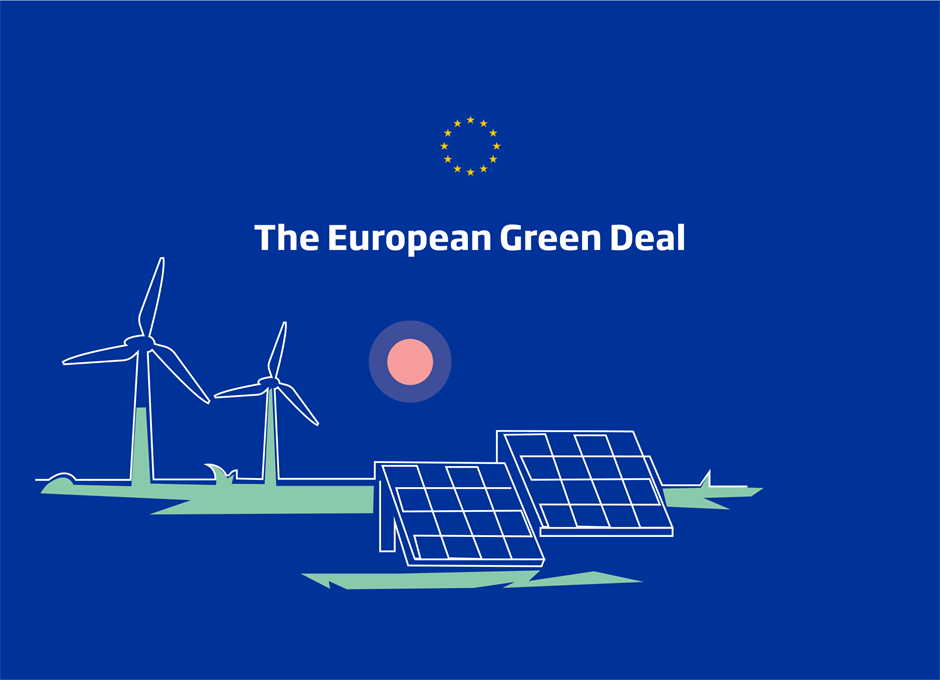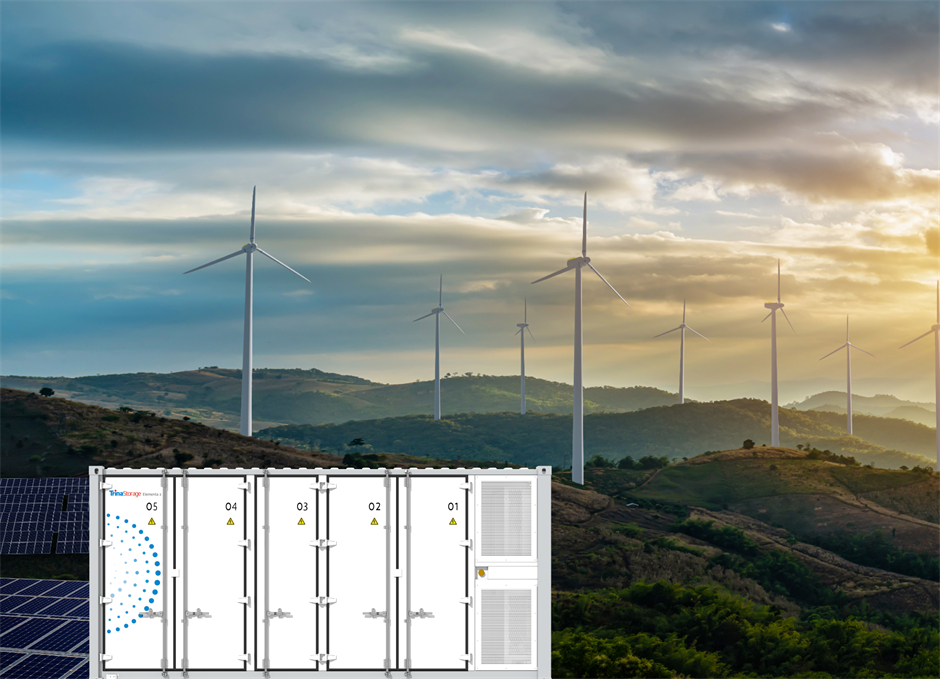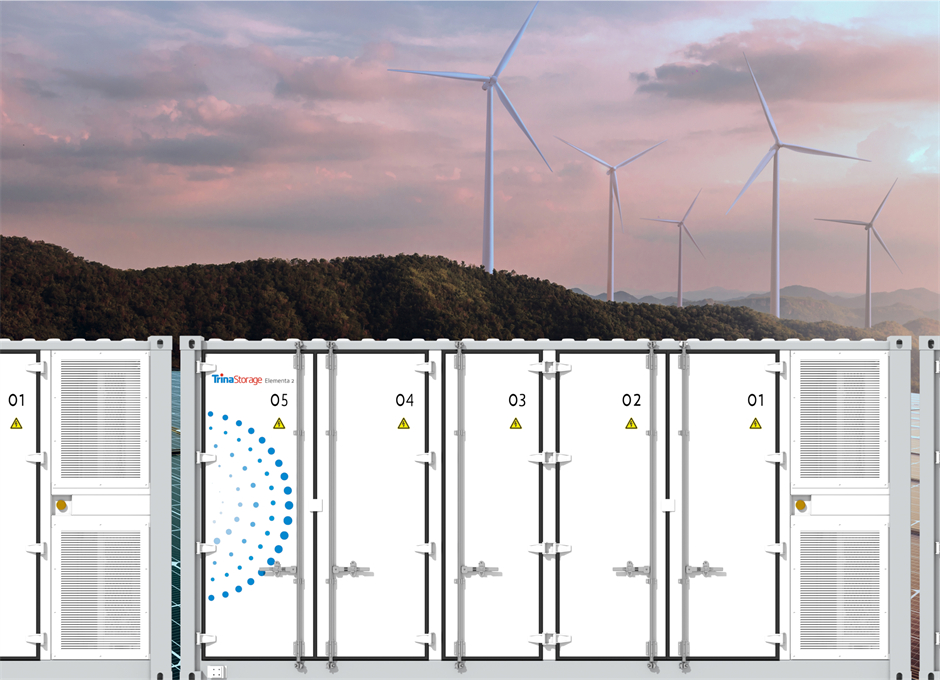Navigating Policy & Regulation in Energy Storage
- 25/02/06
- Energy Storage
Understanding the impact of policies and regulations on the energy storage industry.
The global energy storage market is experiencing unprecedented growth, setting new records and reshaping the energy landscape, largely driven by regulatory frameworks and policies directly enabling the deployment of utility-scale storage solutions.
In 2023, the energy storage market nearly tripled in size, marking the largest year-on-year increase ever recorded. This expansion is set to continue, with BloombergNEF forecasting that the global energy storage market will reach a staggering 137GW/442GWh by 2030, growing at a compound annual rate of 21%.
As the market expands, regional leaders are emerging; China and the United States are clearly dominating, accounting for over half of global installations by 2030. Other significant markets include India, Australia, Germany, the UK and Japan.
The United States Federal Framework for Growth
The Inflation Reduction Act (IRA) of 2022 remains a cornerstone of U.S. energy storage policy, unlocking unprecedented investment in standalone battery storage. Since its introduction, the IRA has driven a surge in utility-scale and distributed storage projects, transforming market economics and accelerating renewable integration.
Over the past three years, the IRA's Investment Tax Credit (ITC) for standalone storage – offering a base 30% credit, with bonuses up to 70% for qualifying projects – has fueled rapid expansion. In 2023 alone, battery deployments in the U.S. reached record levels with an extension through 2032 ensuring long-term stability for developers.
Implementation & Impact Since 2022
Surge in Deployments
In the first quarter of 2024, the U.S. installed 1 GW of grid-scale battery storage, with projections to reach 11 GW by the end of the year – a 45% increase from the previous year.
Financial Strategies
Developers are adapting to high capital expenditure costs and interest rate fluctuations by securing longer-term deals and hedging finances on a multiyear basis to protect returns and future projects. (Source)
Record Loan Agreement
In late 2024, the Biden administration agreed to a record $15 billion low-interest loan to a California-based utility company, to fund projects improving climate change resilience and electrical grid upgrades.
With projections of $1Trillion in energy storage investments by 2030, the IRA is a cornerstone for the sector's rapid expansion.
Regulatory Innovations: FERC Orders
Federal Energy Regulatory Commission (FERC) initiatives have reshaped how storage integrates into wholesale markets:
- Order 841: Enables energy storage participation in capacity, energy, and ancillary markets across RTOs/ISOs.
- Order 2222: Expands opportunities for distributed energy resources (DERs), including rooftop solar and on-site batteries.
Implementation challenges remain, but FERC's firm stance on compliance underscores its commitment to advancing storage integration.
State Leadership: California & Texas
At the state level, California and Texas exemplify different approaches to driving energy storage:
- California: Regulatory mandates like the 1.3GW utility storage requirement (2013) and the Resource Adequacy program align with the state's 100% zero-carbon electricity target by 2045.
- Texas: A market-driven model through ERCOT has led to a battery boom, leveraging private investment for ancillary services and grid reliability.
At Trina Storage, we’re excited to drive innovation in the United States, especially after launching the first full cell-to-AC system integration from a single vendor last year, alongside the all-new liquid cooled Elementa 2 BESS.
European Battery Regulation: Sustainability & Circularity
The EU Battery Regulation (2023/1542) has established itself as a global standard for promoting sustainability across the entire battery lifecycle, replacing the outdated 2006 Battery Directive.
Battery Passports
Central to this regulation is the introduction of battery passports, a groundbreaking digital tool set to be implemented in 2026. These passports will provide detailed information about each battery, including its chemistry, carbon footprint, recycled content, and usage history.
As the EU prepares for the full implementation of battery passports in 2026, updated guidelines in 2024 emphasize data transparency and compliance. Trina Storage is uniquely positioned to meet these standards, reinforcing its commitment to sustainable and traceable battery production.
Recycling Mandates
The regulation also sets ambitious recycling mandates, targeting a 50% lithium recovery rate by 2027 and increasing to 80% by 2031. These measures are complemented by strict landfill bans and requirements for the collection and processing of waste batteries.
Together, these initiatives aim to drive innovation in recycling technologies, improve resource efficiency, and align battery production and end-of-life practices with the EU's circular economy goals.
The European Green Deal
The European Green Deal highlights energy storage as vital to achieving the EU's climate neutrality goals. By prioritizing renewable energy integration, it has driven significant investments in innovative storage technologies that enhance grid flexibility and resilience. Emerging policy frameworks support the deployment of energy storage alongside renewables, ensuring seamless integration and optimized energy systems.

The Green Deal also promotes circular economy principles, reshaping battery design and lifecycle management to minimize waste and environmental impact. These initiatives position energy storage as a cornerstone of the EU's transition to a sustainable and resilient energy future.
Italy's State Sid Scheme
Italy has also launched a €17.7 billion state aid scheme to develop a centralized electricity storage system, marking a major milestone in its energy transition. Approved by the European Commission, this initiative supports integrating renewable energy into the grid while reducing reliance on fossil fuels.
The scheme will fund over 9 GW/71 GWh of storage capacity by 2033, with developers selected through competitive bidding based on the lowest aid requested. Beneficiaries will receive payments covering both investment and operating costs. Open to technologies like lithium-ion batteries and pumped hydro storage, the program ensures compliance with performance standards set by Italy's Transmission System Operator (TSO).
Germany's Capacity Market Reforms
Germany was Europe's leading market for BESS deployments in 2023, according to research from trade group SolarPower Europe, with a 34% share (5.9GWh) of the total 17.2GWh of systems installed in the continent last year.
Adjustments to capacity markets now allow energy storage operators to compete for subsidy contracts on equal footing with traditional power generators, fostering the development of large-scale storage projects.
Grid-scale battery storage has also seen a reemergence, driven by increased national and European Union-level renewable energy targets. Ernst & Young (EY) recently ranked Germany as the fifth most attractive country for investment in battery storage in a top 10 of global markets, alongside its Renewable Energy Country Attractiveness Index (RECAI).
Here at Trina, we’re proactively engaging with Germany's reformed capacity market through significant collaborations including ones with Aquila Clean Energy & Obton:
- Strubbel Project: Construction commenced in August 2024 on a 50 MW/100 MWh BESS in Schleswig-Holstein, marking one of Germany's largest and most advanced battery storage systems.
- Wetzen Project: A 56 MW/112 MWh BESS is being developed in Lower Saxony, further contributing to Germany's energy transition.
- Obton Project: Back in June 2024, we signed a contract with Obton to install over 35 MWh of storage capacity in Tangermünde, Saxony-Anhalt, marking its first project in Germany.

Asia-Pacific Energy Storage Regulatory Landscape
The Asia-Pacific region is emerging as a powerhouse in energy storage, fueled by rapid industrialization, ambitious renewable energy goals, and government-backed initiatives.
There are regional synergies overcoming certain challenges:
- Regional Trade Agreements: Collaboration between Asia-Pacific nations, such as through the Comprehensive and Progressive Agreement for Trans-Pacific Partnership (CPTPP), promotes technology sharing and market growth.
- Regulatory Inconsistencies: Despite advancements, the Asia-Pacific faces hurdles such as regulatory inconsistencies and limited grid infrastructure in developing nations.
Home to some of the world's most significant advancements in energy storage, countries like China, Japan, Australia & India are shaping the global landscape through aggressive targets, innovative policies, and substantial investments.
China's Mature Policies & Standards
China's energy storage sector is propelled by comprehensive policies at both national and local levels. The National Development and Reform Commission (NDRC) and the National Energy Administration (NEA) have outlined ambitious goals, aiming for new energy storage technologies to achieve large-scale commercial application by 2025 and 2030.
This includes investing in pumped storage hydropower and new energy storage technologies whilst enhancing the performance of electrochemical storage and reducing system costs by over 30%.
To support these objectives, China has implemented:
- Safety Standards: The introduction of national standards, such as the “Safety Regulations for Electrochemical Energy Storage Stations,” ensures the secure deployment of storage systems.
- Market Mechanisms: Policies encourage energy storage participation in ancillary services and spot markets, fostering a competitive environment that promotes innovation and cost reduction.
Japan Innovating for a Resilient Future
Japan has positioned itself as a leader in energy storage, driven by its need for energy security and commitment to a low-carbon future.
- Battery Storage Targets: The Japanese government's Green Growth Strategy outlines ambitious goals for renewable energy and energy storage to achieve net-zero emissions by 2050.
- Grid Resilience Initiatives: Following the Fukushima disaster, Japan has invested heavily in grid resilience, with energy storage playing a pivotal role. Projects like the Kyushu Electric Power grid integration highlight the practical use of large-scale batteries for renewable energy stability.
- R&D Investment: Japan is also advancing technologies like solid-state batteries through government and corporate partnerships, setting the stage for next-generation energy storage solutions.
Australia Driving Renewable Integration
Australia has been a pioneer in energy storage for some time now, leveraging its abundant renewable resources and innovative policies to address grid stability and renewable energy integration.
-
Energy Storage Roadmap
Australia's Renewable Energy Agency (ARENA) supports energy storage through grants and research funding, ensuring continued innovation in battery and pumped hydro technologies. - National & State-Level Policies: Australia's National Energy Transformation Partnership (2024) is a new framework focused on integrating utility-scale storage into the national grid to support renewable energy growth. Key updates include financial incentives for large-scale projects. New South Wales (NSW) & Victoria have introduced subsidies and incentives for battery installations, supporting both residential and utility-scale projects.
- Large-Scale Battery Storage: The Hornsdale Power Reserve, commonly referred to as the “Big Battery,” is a flagship project in South Australia. It demonstrates the potential of large-scale batteries to enhance grid stability and provide ancillary services.

India's Ambitions For Regulations
India is actively developing its energy storage sector through strategic policies and initiatives. The Ministry of Power has released a National Framework for Promoting Energy Storage Systems, aiming to transition from fossil fuels to renewable energy sources.
- Energy Storage Obligations (ESO): Mandating obligated entities to gradually increase storage capacity from 1% in FY 2023-24 to 4% by FY 2029-30, with at least 85% of stored energy sourced from renewables.
- Incentives and Support: The government offers waivers on Inter-State Transmission System (ISTS) charges for Hydro Pumped Storage Projects and Battery Energy Storage Systems commissioned up to June 2025, promoting investment in storage infrastructure. 
Additionally, India's Transformative Mobility and Energy Storage Mission focuses on fostering domestic manufacturing of advanced chemistry cell batteries, aligning with the “Make in India” initiative to reduce import dependence and boost local industries.
Middle-East & Africa: Emerging Storage Trends
The Middle East and Africa (MEA) region presents a dynamic and evolving landscape for energy storage, driven by ambitious renewable energy targets and increasing governmental support. As the energy transition gains momentum, the MEA region is positioned to play a critical role in advancing large-scale energy storage deployment. Below are some of the key trends and policies shaping this growth:
Renewable energy integration
Countries across the MEA region are embracing renewable energy to address growing energy demands and meet climate commitments. For example:
Saudi Arabia's Vision 2030
Central to Saudi Arabia's Vision 2030 is its renewable energy strategy. The Kingdom aims to diversify its energy mix, achieving 50% renewable energy by 2030 while targeting net-zero emissions by 2060
Contributing to this goal, as reported by PV Magazine, Saudi Arabia has recently connected its largest battery energy storage system (BESS) to the grid, marking a significant milestone in the country's renewable energy expansion. The project proponents describe the 500 MW/2000 MWh BESS development in Bisha, in the southwestern Saudi Arabian province of ‘Asir, as the world's largest operational single-phase energy storage project.
South Africa's Integrated Resource Plan (IRP)
South Africa's Integrated Resource Plan (IRP) prioritizes energy storage to stabilize the grid, integrate renewables, reduce load shedding, and support distributed energy, driving utility-scale battery adoption through strategic procurement initiatives.
Government initiatives
Governments are introducing policies and incentives to promote energy storage.
United Arab Emirates (UAE)
The Dubai Clean Energy Strategy 2050 sets ambitious targets for clean energy, with energy storage playing a key role in achieving these objectives. The Mohammed bin Rashid Al Maktoum Solar Park is a prominent example, integrating energy storage to optimize solar power use.
Egypt
The government is collaborating with international organizations to establish battery storage systems for large-scale solar projects under its Egypt Renewable Energy Development Strategy.
The Middle East and Africa (MEA) region is at the forefront of the global energy transition, driven by ambitious renewable energy goals, rapid industrialization, and increasing demand for reliable, sustainable power solutions. Trina Storage is proud to expand its footprint in the MEA region, offering cutting-edge energy storage solutions that enable the seamless integration of renewables and support the region's vision for a sustainable future.
Conclusion
As the global energy storage market continues its rapid expansion, the role of supportive policies and regulations has never been more crucial. From groundbreaking updates like the Inflation Reduction Act in the U.S. to the EU's stringent battery regulations and Asia-Pacific's ambitious renewable integration plans, each region is shaping the future of energy storage in unique and transformative ways.
Trina Storage is at the forefront of this evolution, leveraging its innovative solutions to adapt to and thrive under these diverse regulatory frameworks. By aligning with policy-driven incentives such as Investment Tax Credits, sustainability mandates, and capacity market reforms, Trina Storage empowers stakeholders to optimize grid stability, enhance renewable energy integration, and meet ambitious decarbonization targets.
Our commitment to sustainability, scalability, and compliance ensures that Trina Storage not only meets current market demands but also positions itself as a trusted partner for the future. With a global perspective and a focus on large-scale energy storage solutions, Trina Storage is proud to play a pivotal role in driving the transition to a cleaner, more resilient energy future.

To explore how Trina Storage can help you navigate these opportunities, contact our friendly team of helpful storage specialists today.
Relevant Topics
Smart Energy Solutions
delivered straight to your inbox

